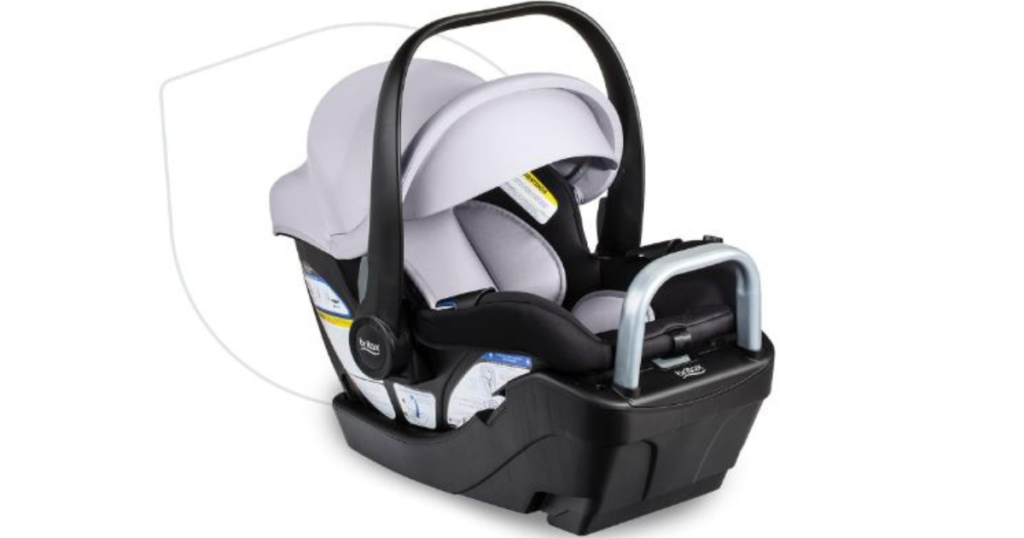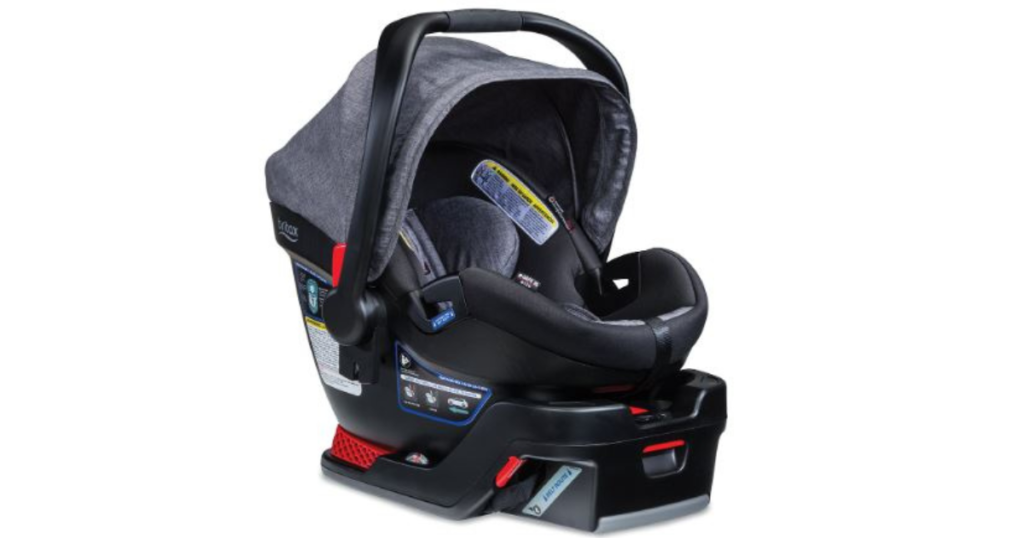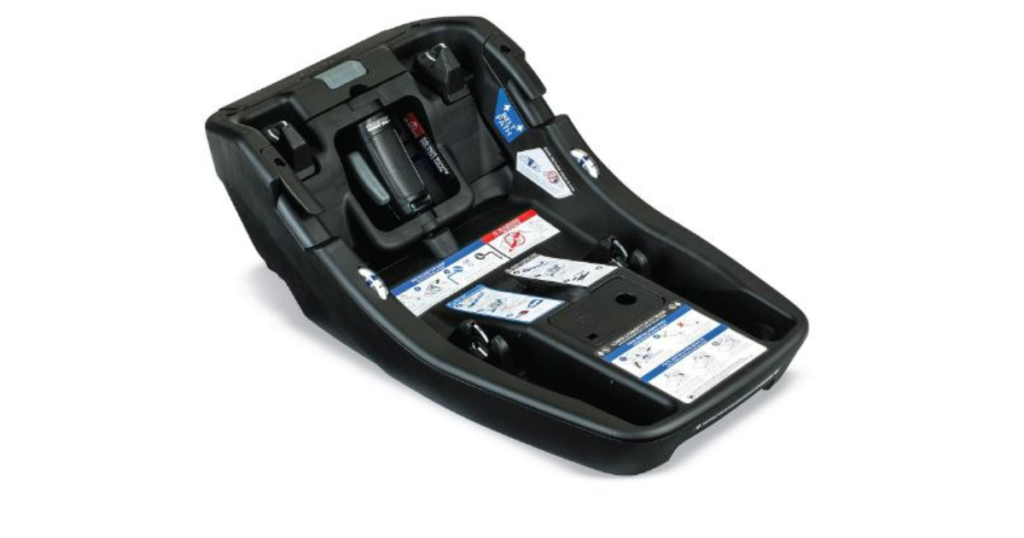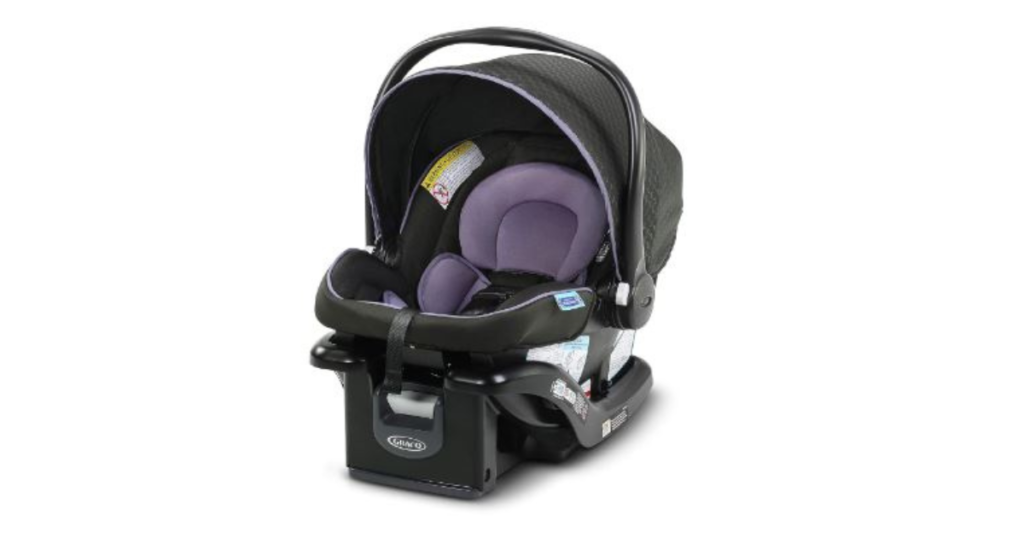The Doona car seat has revolutionized the way parents travel with infants, offering unparalleled convenience and innovation. As both a car seat and a stroller, Doona has attracted considerable attention from new and expecting parents.
However, a crucial question often arises: “Can you use Doona without base?” This article answers this question, providing a detailed analysis for parents and caregivers.
Understanding the functionality and safety implications of using Doona without its base is vital for ensuring the well-being of your child during travel.
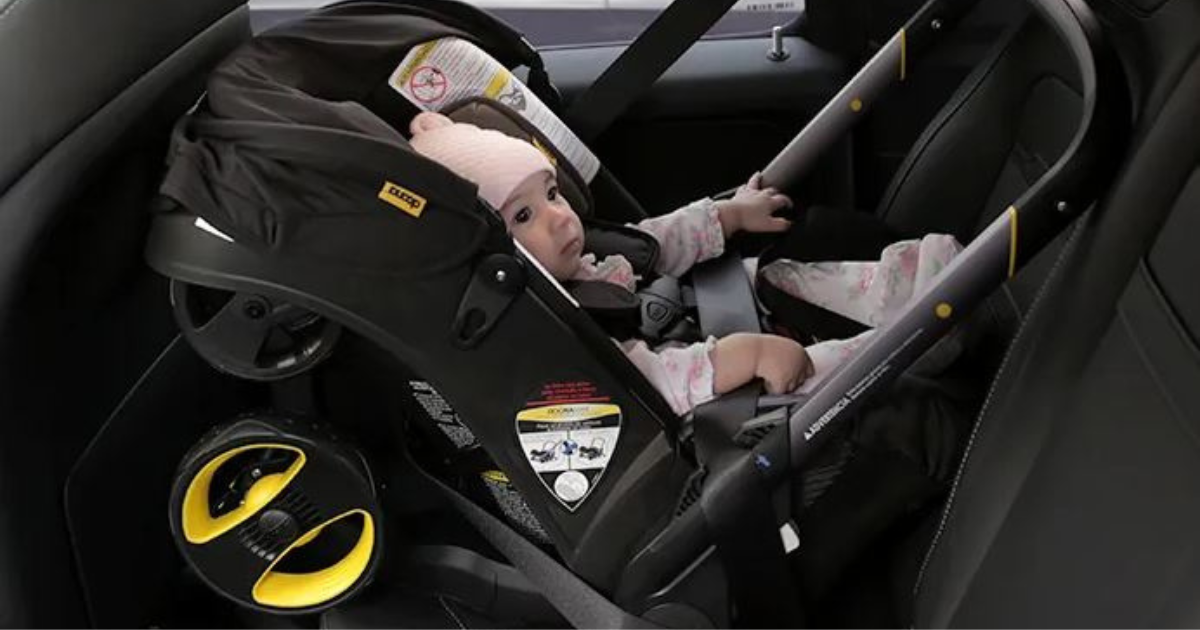
Understanding the Doona Car Seat
The Doona car seat is more than just a typical child’s car seat; it’s a hybrid, seamlessly transforming into a stroller.
This dual functionality makes it a popular choice for parents seeking both convenience and efficiency in child mobility.
The Doona is designed with a range of safety features, including side-impact protection, a five-point harness, and adjustable handlebars that also act as an anti-rebound bar in the car.
These features collectively ensure that the car seat meets stringent safety standards, providing peace of mind for parents. However, understanding these features is crucial in assessing the safety of using the seat without its base.
Related: Company and country where Doona is made
The Importance of the Car Seat Base
A car seat base is designed to remain installed in the car, allowing the actual car seat to be easily attached or removed.
The base ensures stability and often includes additional safety features. For the Doona, the base is engineered to complement its safety design, featuring indicators that confirm correct installation and an anti-rebound protection.
The question of whether Doona maintains its safety integrity without the base is a matter of significant concern, considering the base’s role in providing additional security and stability during travel.
Related: How safe is the Doona car seat?
Can You Use Doona Without Base?
The Doona car seat can indeed be used without its base, which is an aspect of its design catering to the modern, on-the-go parent. This flexibility allows parents to use the seat in different vehicles without the need for multiple bases.
However, safety should never be compromised. When used without the base, it’s crucial to follow the manufacturer’s guidelines to ensure that the seat is properly installed using the vehicle’s seat belt. T
his installation might not be as straightforward as using the base, so understanding and following the correct procedure is paramount for your child’s safety.
Recommended: How long can you use the Doona car seat?
How To Install Doona Car Seats Without the Base
Installing a Doona car seat without its base is a straightforward process, although it requires careful attention to detail to ensure safety. Here is a step-by-step guide:
1. Positioning the Car Seat
- Place the Doona in the Rear-Facing Position: The Doona car seat should always be used in a rear-facing position in the car. Position it on the vehicle seat where you intend to install it.
2. Securing the Car Seat with the Seat Belt
- Extend the Vehicle’s Seat Belt: Pull out the seat belt completely.
- Thread the Seat Belt Through the Doona: There are designated belt paths on the Doona car seat. Slide the lap portion of the seat belt through these paths, making sure the belt is not twisted.
- Buckle the Seat Belt: After threading the belt through, buckle it. Ensure that the lap belt portion is low and tight across the Doona car seat, running across the lower part of the seat.
3. Tightening and Securing
- Pull to Tighten: Once the seat belt is buckled, pull on the shoulder part of the seat belt to tighten the lap section. This step is crucial to remove any slack from the belt, ensuring the seat is securely installed.
- Lock the Seat Belt: Many vehicle seat belts automatically lock when fully extended and then retracted. Check your vehicle’s manual to see if your seat belts have this feature. If not, you may need a locking clip.
4. Final Adjustments
- Check for Tightness: The car seat should not move more than an inch side-to-side or front-to-back at the belt path. If it does, unbuckle, tighten the belt more, and then rebuckle.
- Adjust the Handlebar: According to Doona’s guidelines, the handlebar should be in the position nearest the back of the vehicle seat. This position helps to protect the baby in a collision.
5. Safety Checks
- Double-Check Installation: Make sure everything is secure and the seat is installed at the correct angle. Some Doona models have an angle indicator to assist with this.
- Inspect Regularly: Each time you place your child in the seat, give it a quick check to ensure it’s still securely installed.
Additional Tips
- Refer to the Manual: Always refer to the Doona car seat manual for specific instructions and safety advice.
- Practice Makes Perfect: If you’re new to installing car seats, or to the Doona in particular, practice installing it a few times to become familiar with the process.
- Seek Professional Help if Needed: If you’re unsure about your installation, seek help from a certified child passenger safety technician.
Note: The key to a safe installation is ensuring that the car seat is tightly secured and does not move more than an inch in any direction at the belt path. Proper installation is crucial for the safety of your child during travel.
Related: How long can a baby stay in a Doona car seat?
Pros and Cons of Using Doona Without the Base
Using the Doona car seat without its base has its advantages and disadvantages, and parents need to weigh these factors to make an informed decision. Here’s a breakdown of the pros and cons:
Pros of Using Doona Without the Base
1. Portability and Convenience: The ability to use the Doona without a base is highly convenient for parents who travel frequently, use multiple vehicles, or rely on taxis and ride-sharing services. It eliminates the need to transfer the base between different cars.
2. Saves Space: Not using a base can save significant space in the vehicle, which is particularly beneficial for smaller cars or when traveling with multiple passengers and luggage.
3. Ease of Transition: The Doona’s design allows for a quick transition from car seat to stroller, which is further streamlined when the base is not involved. This feature is especially handy for running errands or navigating through airports.
4. Reduced Equipment: For families living in urban areas or those who prefer a minimalist approach, not having to deal with an extra piece of equipment (the base) is a big plus.
Cons of Using Doona Without the Base
1. Complexity in Installation: Installing the Doona without the base requires threading the vehicle’s seat belt through the seat correctly every time. This process can be more complex and time-consuming than simply clicking the seat into a pre-installed base.
2. Potential for Incorrect Installation: The risk of incorrect installation increases without the base, as the seat belt must be correctly routed and tightly secured each time. Improper installation can significantly compromise the safety of the car seat.
3. Less Stability: While the Doona is designed to be safe without the base, the base does provide additional stability and can include features like additional impact protection or more precise installation indicators.
4. Frequent Adjustments: Each time the car seat is used without the base, it requires readjustment and securing with the seat belt, as opposed to the base where settings are adjusted only once.
5. Comfort and Convenience: Some parents find that having the base installed in their car makes the routine of getting in and out of the car with the baby more streamlined and less stressful.
Expert Opinions and Safety Standards
Child safety experts emphasize the importance of proper car seat installation, whether with or without a base.
While the Doona is designed for safe use without the base, experts advise parents to familiarize themselves with the installation process thoroughly.
Compliance with safety standards such as the Federal Motor Vehicle Safety Standards (FMVSS) in the U.S. is crucial. These standards ensure that car seats, whether used with or without a base, provide adequate protection in the event of a crash.
Real-World Usage Scenarios
Using the Doona car seat without its base can be particularly advantageous in various real-world scenarios. Here are some common situations where parents might find this feature useful:
1. City Living
- Frequent Cab or Ride-Sharing Use: In urban areas where taxis or ride-sharing services are a primary mode of transportation, the ability to quickly and securely install the Doona without a base is invaluable. It simplifies transitioning from walking to riding without the hassle of carrying a separate base.
2. Traveling
- Airports and Planes: For families who travel by air, the Doona’s easy installation without a base makes navigating airports simpler. It’s also beneficial for use in rental cars at the destination, as there’s no need to rent a car seat or carry a base along.
- Public Transportation: When using buses or trains, the Doona can be quickly converted from a stroller to a car seat, making public transportation more manageable with a baby.
3. Switching Between Multiple Vehicles
- Families with Multiple Cars: If a family has more than one car, using the Doona without a base means not having to buy additional bases or move a base between cars. This is convenient for families who often switch vehicles.
- Carpooling and Playdates: When a child is traveling in different vehicles, such as with friends or relatives, the Doona’s flexibility is a significant advantage.
4. Limited Storage Space
- Small Cars: For those with compact cars, where space is a premium, not having to accommodate a base can be a big plus.
- Living in Small Apartments: Residents of small apartments or homes with limited storage space benefit from not having to store a bulky base.
5. Emergency or Unexpected Situations
- Unexpected Rides: In situations where a parent or caregiver might need to take an unplanned taxi or ride with friends, the ability to use the Doona without a base allows for safe and convenient travel.
6. Daily Errands and Short Trips
- Quick Trips: For quick errands, where convenience is key, not having to deal with a base can make short trips less cumbersome.
Frequently Asked Questions
How do I install the Doona car seat in my car without the base?
To install the Doona without the base, position the car seat in the rear-facing direction, thread the vehicle’s seat belt through the designated belt path on the Doona, and buckle the seat belt. Ensure that the belt is tight and the car seat does not move more than an inch side-to-side or front-to-back at the belt path.
Can the Doona car seat be used in any vehicle without the base?
The Doona car seat can be used in most vehicles without the base, as long as the vehicle is equipped with a compatible seat belt system. Always refer to the Doona user manual and your vehicle's manual for specific compatibility details.
Is it more difficult to install the Doona car seat without the base?
Installing the Doona without the base may require more steps than with the base and needs careful attention to ensure that the seat belt is properly routed and secured. However, with practice, it becomes easier and more intuitive.
Can I switch between using the Doona with and without the base?
Yes, you can switch between using the Doona with and without the base. This flexibility is one of the key features of the Doona car seat, making it suitable for various travel needs and vehicle types.
How do I know if the Doona car seat is installed correctly without the base?
After installation, the Doona should not move more than an inch in any direction at the belt path. Double-check that the seat belt is properly routed and tightly secured. Refer to the Doona manual for detailed instructions and diagrams.
Are there any specific situations where it’s better to use the Doona without the base?
Using the Doona without the base is particularly advantageous for city dwellers who frequently use taxis or ride-sharing services, for traveling, and when switching between multiple vehicles.
Does using the Doona car seat without the base void the warranty?
No, using the Doona car seat without the base does not void the warranty, as long as it is used according to the manufacturer’s guidelines.
Should I perform any additional safety checks when using the Doona without the base?
Regularly inspect the installation, especially if you frequently install and remove the car seat. Ensure that the seat belt is always properly routed and secured tightly.
Can I get assistance with installing the Doona car seat without the base?
Yes, you can seek assistance from a certified child passenger safety technician (CPST) for help with installation. They can provide guidance and ensure that your car seat is installed correctly.
Conclusion
Using the Doona car seat without its base is possible and can be safe, provided that the installation is done correctly according to the manufacturer’s instructions.
While the base offers convenience and additional safety features, the flexibility of the Doona car seat without the base is a significant benefit for many families. It’s important to weigh the pros and cons and to prioritize safety in every use scenario.

